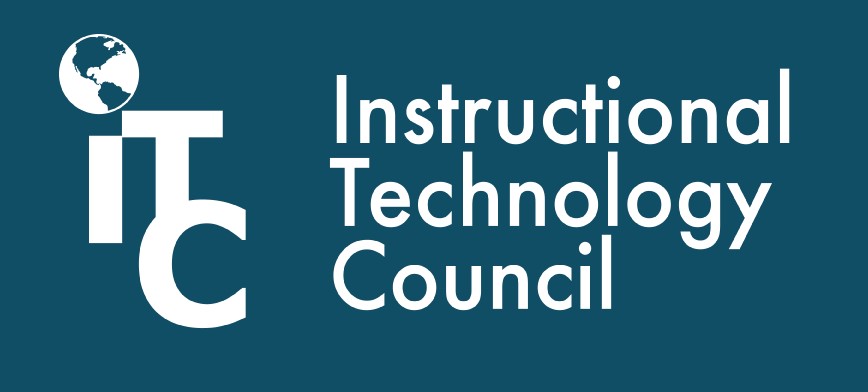Staffing shortages emerged as one of the greatest challenges for community college distance learning programs during the pandemic, according to an annual survey by the Instructional Technology Council (ITC).

Nearly half (48%) of respondents to the 2022 ITC Annual National Distance Learning Survey indicated they had no dedicated staff (16%) or only 1-2 dedicated staff (32%) to deal with the challenges of moving all instruction online. The survey results also confirmed that distance learning programs didn’t receive any increased staffing to sustain the nearly two years of mostly online instruction during the pandemic.
This article is provided by the Instructional Technology Council, an affiliated council of the American Association of Community Colleges.
Since 1999, community colleges have enthusiastically embraced online instruction – and fully online degrees – to increase student access and to provide greater flexibility for students. As a result, when the pandemic prompted the need to abandon traditional instruction, 93% of community colleges were offering online classes and degrees. In fact, the average enrollment for a college distance learning program was 25%, according to the National Student Clearinghouse.
However, there was a sizeable number of full-time faculty who had no online teaching experience, and more importantly, most part-time faculty had no online teaching experience at the start of the pandemic. That was the “heavy lift” facing distance learning professionals – administrators, instructional designers, trainers and technicians. The lack of proper staffing support for the “great migration to online instruction” was – and remains – a major impediment to providing quality virtual instruction.
This is the 17th year of the ITC national survey which was first conducted in 2004. The survey has annually tracked major challenges and trends for community colleges offering online classes and degrees. It is circulated to ITC-member institutions in the late fall and ensures a national distribution of respondents and institution sizes (Carnegie).
Covid and online Instruction
Distance-learning administrators identified three critical pandemic-related challenges:
- Training full/part-time faculty
- Faculty/student access to appropriate devices/broadband
- Adequate staffing to support expanded online instruction
Comments from respondents addressed the challenge of having to provide totally virtualized training solutions for faculty and students lacking adequate devices/education-quality broadband as well as significant levels of “technology-phobia.” The lack of adequate staffing undermined efforts to ensure prompt/responsive training and tech support as well as to ensure a quality learning experience.
For faculty, it resulted in uneven and diminished quality design, appropriate assignments, response times for dealing with student concerns and grading, and a lack of student engagement. For students, the primary defects included a lack of regular and effective student support, proper preparation for taking a class online and feeling disconnected from the learning environment.
Inadequate devices (especially outdated equipment) and poor/no access to wifi contributed greatly to frustration and disengagement for both students and faculty.
Varying strategies
During the pandemic, community colleges pivoted to an array of online teaching strategies to meet the needs of students and faculty.
Distance-learning administrators faced a rather unique set of circumstances over the past two years. For the purposes of the annual survey, they were asked to identify the greatest challenges they dealt with during the pandemic:
- Dealing with Covid-19
- Staff for training/technical support
- Adequate administrative authority during the pandemic
Losing the physicality of staff interaction, PD training and faculty/student support was highly disruptive. No one anticipated such an extended period of working, teaching and learning remotely. Individual comments from administrators described a highly stressful, prolonged and overwhelmingly under-staffed effort to keep instruction virtual. Administrators also discussed concerns about the mental health impact on staff, faculty and students.
Trends in online education
As has been the practice of the survey, a recurring number of questions have been included in the survey to determine emergent trends and effective practices in online learning. Highlights from this year’s survey:
The survey has regularly tracked the evolution of staffing for distance-learning programs. National research has confirmed that properly designed and supported online instruction can significantly increase student engagement, success and completion. Observations directed at the poor performance of online learning during the pandemic missed the mark. It wasn’t an inherent flaw of this modality of instruction, but rather the failure to properly fund and staff online course training, development and support.
Open educational resources (OER)
The ITC survey has been monitoring the growth in OER interest and adoptions at community colleges for several years. Initial interest eight years ago was guarded with relatively few very optimists that the OER movement could successfully compete against established textbook publishers. This year’s survey results confirm that the OER movement has made significant progress in OER awareness as well as recognition of the impact of OER in the next 3-5 years:
ITC also asked respondents to identify current roadblocks to OER adoption at their institutions. They identified the following:
Online degrees/certificates
The survey has tracked a trend in increasing the number of fully online degrees and certificates at community colleges. A major sub-trend in this area is the increased focus on implementing one or more “Z” degrees/certificates (the adoption of OER materials to reduce the cost and logistics of textbooks for online instruction).
For the past 15 years, there has been an emerging effective practice for a distance-learning program to adopt course development standards for curriculum, design and faculty instruction. Institutions that do this have experienced noteworthy improvements in student success, engagement and completion – many times exceeding the percentages for traditional instruction.
This year, 88% of respondents indicated they had adopted a standards solution for online course development. The chart below identifies the level of adoption for each solution:
Finally, the survey established several trends that have remained constant for the past several years. Online education, after all, has matured considerably and as programs have grown, stability and familiarity have become preferred by administrators, staff, faculty and students.
Major stable trends include:
- Online enrollments continue to grow; even negating the exponential growth during the pandemic, the major source of enrollment growth for a typical college remains the online enrollments. Traditional enrollments continue to contract – and community colleges nationally have been experiencing a steady decline in traditional enrollments.
- Institutions are more likely to stay with their current LMS than switch. And institutions are much happier with the features, reliability and technical support from their LMS provider.
- Canvas and Blackboard Learn continue to dominate the LMS market – D2L BrightSpace rounds out the top three – all other LMS solutions represent a far smaller market share
- Institutions view the quality and effectiveness of their online courses matches – or exceeds – the quality of their traditional classes. Online education is now accepted – and respected – as a favored instructional modality at most community colleges.
- Institutions continue to struggle with American Disability Act compliance – but this year’s survey affirmed that all respondent’s programs have efforts underway to meet compliance requirements.





